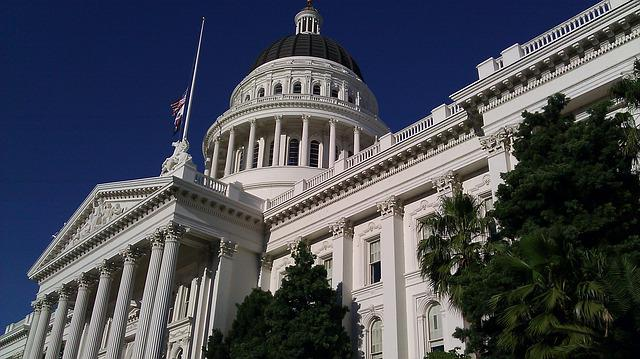How Much is the Continuing Resolution
Congress and the president may sometimes be unable to pass a budget request for the upcoming fiscal year (FY) due to unavoidable events like the coronavirus outbreak, presidential politics, and a Supreme Court nomination. Moreover, Congress can pass a short-term continuing resolution to finance the government.
This article covers what you need to know about the continuing resolution, how it can help the people, and why it is vital to the federal government.
What is a continuing resolution?
The Continuing Resolution (CR) is legislation to keep federal operations going when Congress fails to finance the government before a new fiscal year. When it comes to funding the government, the house and senate are responsible for passing legislation.
Taxpayer funds are spent on everything from national security and public infrastructure to government operations.
When a CR is in place, appropriations stay at the same level or are changed in small ways for a set amount of time. It is common for continuing resolutions to grant financing at a rate or formula dependent on the prior year's funding.
How does continuing resolution works?
A continuing resolution is possible if Congress and the president cannot agree on and pass one or more regular appropriations bills. A new appropriations bill is passed each fiscal year that provides financing for the next one-year period.
According to federal government accounting standards, the fiscal year begins October 1 and ends September 30 of the following year. But suppose the house and senate fail to approve legislation to finance the government before the new fiscal year begins. In that case, they can pass legislation to maintain governmental operations at existing spending levels. The CR has a time limit until Congress passes the appropriations bills.
Continuing resolution examples
The house and Congress have struggled to sign 12 appropriation bills into law since 1997. They instead use continuing resolutions, which are short-term solutions that circumvent the complex but essential budget process of allocating funds.
Lawmakers frequently pass several continuing resolutions in a single fiscal year before agreeing on spending levels for the entire year. Since 1998, 127 CRs have been enacted into law.
Why should budget authority include continuing resolutions?
The appropriations process can be affected by policy riders attached to continuing resolutions. Temporary funding arrangements avert government shutdowns. A full-year budget is preferable to a CR because it allows federal agencies to prepare and match resources to responsibilities. Predictability concerning government activity benefits the economy.
Most federal expenditure is governed by legislation and not by appropriations. Appropriations account for a third of overall spending and fund programs. It practically covers every area of our everyday lives and the economy, including the national military, military construction, operating national parks, law and immigration enforcement, health care research, and many other activities.
All of these operations are funded by the 12 regular appropriation bills Congress and the President pass each year. Under typical budget orders, lawmakers would pass all full-year measures by October 1.

Advantages of a continuing budget resolution
The house and senate passed the continuing resolution as supplemental appropriations when lawmakers failed to reach an agreement on appropriation bills for a full fiscal year. Also, CR funding became helpful in many areas of government funding.
Provide funding
Continuing resolution's primary use is to set a budget based on the previous fiscal year's funding expenses. An appropriations bill must complete the filing first before the financing may continue.
Parts of the finances may have minimal changes in the CR. Existing federal programs can continue with this joint decision until Congress finalizes a longer-term solution.
Prevent government shutdown
Because politicians can't agree on all or part of the appropriations bills for the whole fiscal year, temporary funding measures are helpful to avert government shutdowns in the long run.
It is possible that a government shutdown will occur, which could have a substantial financial and economic impact. As a result, the economy suffers from the disruption of government services and programs and uncertainty about future fiscal policies.
Aid government agencies in resource planning
Implementing a continuing budget resolution helps government agencies plan well and match their resources to their responsibilities. Continuing resolutions give Congress enough time to set a budget request for government funding.
Budgeting and spending process in the United States
As stated above, the United States government has a fiscal year that begins on October 1 and ends on September 30. To fund operations, staff, equipment, activities, and even disaster relief, Congress must allocate a certain amount of money to each department, agency, and program.
In the spring, a budget resolution is traditionally agreed upon by the House of Representatives and the Senate and used to set spending limitations for twelve regular appropriations bills.
The federal government gets its budget from the twelve appropriations bills for the next fiscal year. The President must sign the appropriations bills into law, but the budget resolution itself does not need to be approved by them.

What is the U.S. budget for 2022?
The F.Y. 2022 budget proposed by President Biden totals more than $6 trillion, the largest in history. About 65% of the budget must go toward Social Security, Medicare, and the Supplemental Nutrition Assistance Program (SNAP).
Expenditures for F.Y. 2022 are $1.873 trillion above federal income. Taxes and gains from quantitative easing account for most of these money inflows.
This year's budget reinforces these initiatives to empower and safeguard federal employees. The most common considerations for the U.S. budgeting are:
Assisting federal employees with long-term careers in the civil service
Federal departments and agencies will be able to recruit and maintain a diverse and inclusive workforce thanks to the budget's $15 per hour wage guarantee and 2.7% pay raise for the federal civilian workforce, which is in line with the military's pay increase.
Workers will have a deeper involvement in their working circumstances due to the President's Executive Order on Protecting the Federal Workforce, which directs agencies to bargain over new topics.
Enhancing the hiring process
The budget will support top talent recruiting and hiring, which includes funding for more effective qualifying exams for better outcomes when hiring. When it comes to internship programs, agencies will compel the proposed legislation to reinvigorate them, establish talent teams, and provide resources for a new office that would support coordinated Government-wide hiring measures to improve the results for important positions.
Ensure COVID-19 pandemic relief funds and taxpayer resources
The Senate passed the American Rescue Plan Act of 2021 to provide financing for the COVID-19 pandemic relief effort, which the Administration will handle with the utmost accountability and openness and a laser-like concentration on results. Programs and service delivery provide comparable results while fostering transparency and supporting long-term outcomes that benefit the American people to attain these goals.
With substantial financial management, an emphasis on program integrity, and timely reporting of statistics on the use of public funds, these objectives can be met while imposing the least amount of hardship on agencies and recipients.
Deliver design and technology to improve services
The U.S. Government also allocates technology to avoid the frustrating work of outdated tools and processes. Government technology and service delivery issues were exposed and exacerbated during a time of critical need by the COVID-19 epidemic. Due to the USDS's objective to employ design and technology to provide better services to American citizens, the Administration requested and received $200 million under the American Rescue Plan for United States Digital Service (USDS).
The Government hires a team of seasonal operational engineers, service designers, product managers, and procurement experts to introduce best practices and new methods and help agency operations. Covid-19 pandemic vaccinations and testing, economic recovery, environmental justice, and immigration reform are part of USDS' involvement in the American Rescue Plan projects.
U.S. Discretionary Spending in 2022
This current fiscal year budget for discretionary spending is $1.688 trillion. Much of it goes toward military spending, including Homeland Security and the Veterans Affairs Department. The three major of these initiatives of the discretionary expenditure include the following:
- Military operations
- Health and Human Services
- Education
- Housing and Urban Development
Overseas Contingency Operation Fund. The fund will not receive funding in 2022, as the service budget will be sufficient to finance its activities. Disposable funds, such as those set aside for hurricane and wildfire relief, are becoming increasingly common.
The federal budget process could benefit from agreement on future discretionary spending, allowing legislation to be passed more quickly.
Source: https://executivegov.com/articles/the-continuing-resolution-for-the-fiscal-year-2022-explained/
0 Response to "How Much is the Continuing Resolution"
Post a Comment